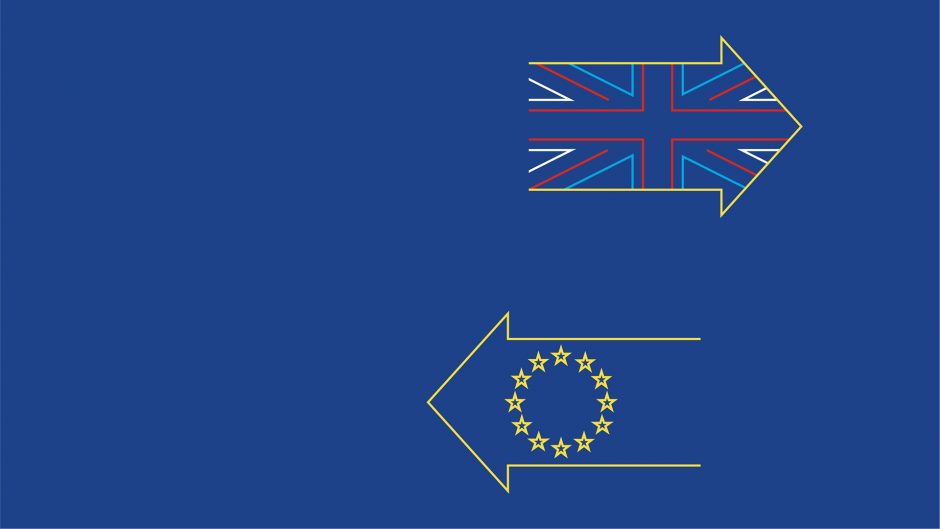Das Jahr neigt sich dem Ende entgegen, was zugleich das nahende Auslaufen der Brexit Übergangsfrist bedeutet. Bevor wir uns in die Weihnachtspause verabschieden, werfen wir also nochmal einen Blick auf das aktuelle Brexit Geschehen. Neues gibt es zur Nutzung von UK-Ratings sowie zum Vertrieb von UK-Fonds in der EU.
Nutzung von UK-Ratings in der EU
Ende Oktober 2020 hat die Europäische Wertpapier- und Marktaufsichtsbehörde (ESMA) ihr Statement vom Oktober 2019 zu den Auswirkungen des Brexit auf UK-Ratingagenturen (Credit Rating Agencies – CRA) aktualisiert. Darin bestätigt die ESMA, dass EU-CRA UK-Ratings übernehmen können und UK-Ratings auf diesem Wege nach Ablauf der Übergangsfrist (weiter) in der EU genutzt werden können.
Nach dem Ablauf der Brexit-Übergangsfrist am 31. Dezember 2020 wird UK aus Sicht der EU zum Drittstaat; Ratingagenturen mit Sitz in UK gelten daher als Drittstaaten-CRA. Die EU-Ratingverordnung (Credit Rating Agencies Regulation – CRA-Verordnung) sieht zwei Möglichkeiten vor, wie Ratings von Drittstaaten-Ratingagenturen in der EU genutzt werden können. Zum einen die sog. Äquivalenz oder Gleichwertigkeit. In diesem Falle erkennt die EU durch einen förmlichen Beschluss die Gleichwertigkeit des UK-Aufsichtsregimes über CRA mit dem europäischen Aufsichtsregime an. Bis dato gibt es allerdings keinen solchen Gleichwertigkeitsbeschluss.
Als zweite Möglichkeit zur Nutzung von UK-Ratings in der EU sieht die CRA-Verordnung die Möglichkeit der Übernahme von UK-Ratings durch eine EU-CRA (sog. Endorsement) vor.
Damit ein Endorsement möglich ist, müssen drei Voraussetzungen erfüllt sein. Zunächst muss das Drittstaaten-Aufsichtsregime über Ratingagenturen bestimmte Standards erfüllen. Insoweit plant UK mit Ablauf der Brexit-Übergangsfrist am 01. Januar 2021 das Inkrafttreten des UK Statutory Instrument 266 vom 13. Februar 2019. Dies ESMA geht laut ihrer aktuellen Stellungnahme nunmehr zum einen davon aus, dass es zu dem geplanten Inkrafttreten im Januar 2021 kommt und zum anderen, dass das Regelwerk die in der CRA-Verordnung näher bestimmten Standards erfüllt.
Als weitere Voraussetzung bedarf es eines Abkommens zum Austausch von Informationen zwischen der ESMA und der britischen Finanzaufsicht FCA (Memorandum of Understanding – MoU). Dieses MoU wurde bereits rechtzeitig vor Ablauf der Brexit-Übergangsfrist geschlossen und ist hier abrufbar.
Schließlich muss eine EU-CRA die Entscheidung zur Übernahme von UK-Ratings treffen. Die Entscheidungshoheit liegt hier allein bei der jeweiligen EU-Ratingagentur, die ESMA hat darauf keinen Einfluss. Nach derzeitigem Stand hat die überwiegende Mehrheit der UK-Ratingagenturen entsprechende Vorkehrungen getroffen und eine Übernahmevereinbarung mit einer EU-CRA geschlossen. Welche UK-CRA das im Einzelnen sind, kann hier eingesehen werden.
Vertrieb von UK-Fonds in der EU
Ende November diesen Jahres hat die Bundesanstalt für Finanzdienstleistungsaufsicht (BaFin) mitgeteilt, dass UK-Fonds, die nach dem Ablauf der Übergangsfrist weiterhin in Deutschland vertrieben werden sollen, schon vor Ablauf der Übergangsfrist ihre Vertriebsanzeige einreichen können.
Derzeit gelten UK-Fonds noch als EU-Fonds. Haben sie in UK eine Vertriebserlaubnis erhalten, müssen sie in den anderen Mitgliedstaaten, in denen sie vertrieben werden sollen, keine erneute Vertriebserlaubnis beantragen, sondern zeigen der jeweils zuständigen Behörde einfach die bestehende Erlaubnis aus UK an (sog. EU-Passporting).
Nach dem Ablauf der Brexit Übergangsfrist ist ein EU-Passporting nicht mehr möglich. UK-Fonds gelten dann als Drittstaatenfonds. In jedem EU-Land, in dem ihr Vertrieb weiterhin erfolgen soll, muss dann ein bilaterales Drittstaaten-Vertriebsanzeigeverfahren durchlaufen werden. Damit ein lückenloser Vertrieb möglich ist, erlaubt die BaFin die Durchführung des Drittstaaten-Vertriebsanzeigeverfahren bereits vor Ablauf der Brexit Übergangsfrist, also bevor UK-Fonds tatsächlich als Drittstaatenfonds qualifizieren.
Brexit Abkommen ja, nein, vielleicht?
Mit der aktualisierten Stellungnahme des ESMA und der Mitteilung der BaFin liegt nunmehr Rechtssicherheit in weiteren Bausteinen des Finanzmarktrechts vor. Wir dürfen in der Zwischenzeit alle weiterhin gespannt bleiben, ob sich die EU und UK bis zum Ablauf der Übergangsfrist doch noch zusammenraufen und ein Abkommen schließen können. Die Hoffnung stirbt ja bekanntlich zuletzt.


